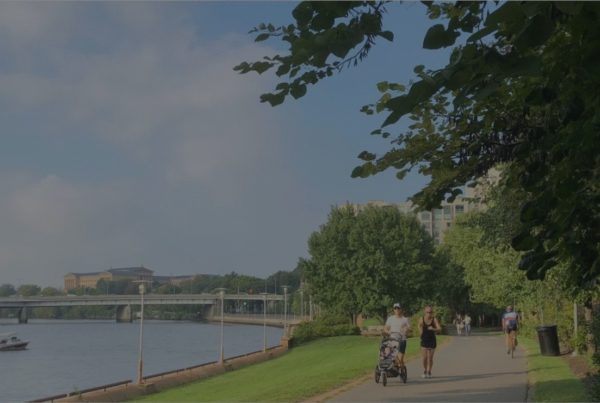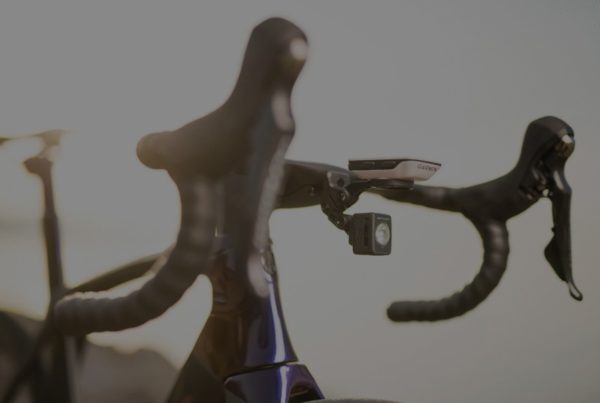If you’re one of those readers who reads a book from cover to cover, you may have noticed that in the acknowledgements for Bicycling & the Law, I thanked Cronometro, the Madison, Wisconsin shop owned by Colin O’Brien. I first met Colin back in our college days, when we were in the same Latin class. I noticed that his legs were shaved, and we struck up a conversation about that. He said he was a bicycle racer, and worked for Andy Muzzi at Yellow Jersey. Colin suggested that I come down to the shop and check out the bikes. I did, and with his help, I got into racing myself. Colin went on to set the national hour record in 1981, and later joined the national team.
Two weeks ago, Colin was in the news again. It began with a pass; two cyclists, a man and a woman, dressed in dark clothing, passed another cyclist – Colin – in the night. As the two unlit cyclists passed, Colin shouted some advice – “Get a light!” What happened next made the news across the country. Angered by Colin’s unsolicited advice, both cyclists shouted back, telling Colin to mind his own business; the male cyclist then attempted to run Colin off the road. Colin evaded the maneuver, and continued on his way, thinking that was the end of it.
But they weren’t done with Colin. As he neared his home, he noticed that the two riders had followed him. The pair approached Colin in front of his home, and continued the conversation about lights, with the woman telling Colin that she noticed he seemed to have plenty of lights, and asking if she could have one. He obliged her…and then the male cyclist attacked, grabbing Colin by the head and twisting him to the ground, kneeing Colin in the ribs. The man, riding a Trek time trial bike, and the woman, riding an Orbea road bike, then rode off, leaving Colin behind.
A week later, acting on tips received, Madison police arrested 28 year-old Dustin Dunlavy on charges of battery and disorderly conduct. Dunlavy’s girlfriend, the woman who was riding with him that night, was interviewed by police but not charged. Although Dunlavy admitted to grabbing Colin by the head, he denied kicking him in the ribs. Asked why he attacked Colin, Dunlavy replied that he felt “extremely insulted” by Colin’s shout to “get a light.”
“Extremely insulted.”
Let’s be honest here. The two cyclists probably knew they were breaking the law by riding without lights. In fact, they probably not only knew that they were breaking the law, they probably didn’t care that they were breaking the law. They were also probably aware that their dark clothing made them hard to see at night – and may not have cared about that, either. Some cyclists get a thrill from being nearly invisible to motorists, becoming so addicted to the adrenaline rush that comes with near-death experiences that they actively seek out more opportunities to experience the rush. Other cyclists, however, simply don’t realize just how invisible they are when in “ninja mode.”
So in all likelihood, Dunlavy and his girlfriend were well-aware that they were breaking the law, and may have been aware that they were virtually invisible in the dark. It wasn’t as if telling them they needed a light was going to help them see the light. The truth is, it would probably annoy most people at least somewhat if a stranger yelled unwanted advice. But Dunlavy was more than “somewhat annoyed” – he said he felt “extremely insulted.” What’s going on here?
In two words, road rage. Earlier this summer, we saw a string of “bikes vs. cars” road rage incidents that began with the July 4th assault of two cyclists by a road-raging doctor in the tony Brentwood neighborhood of Los Angeles. Over the course of the next month, there were five more road rage incidents involving cyclists, culminating in the August 2nd assault of a cyclist by a road-raging pickup driver near Kamas, Utah. In between the assault in Brentwood and the assault in Kamas, there were three road-rage incidents in Portland, Oregon over the space of a week-and-a-half, including two incidents involving a cyclist on a bike and a cyclist in a car. As we saw in this “summer of rage,” in each of the Portland road rage incidents, the confrontation was triggered by a bit of unwanted advice.
As I noted, most people might be annoyed with unsolicited advice from a stranger. But most of the time, unsolicited advice – “Hang up and drive” comes to mind – is made from the safety and anonymity of being separated from the target of one’s advice by the environmental bubble the driver is ensconced in. What we’re witnessing is the beginning of something new – advice directed at strangers who can hear us, and who can easily respond. As more people take to bikes, encounters between cyclists are likely to increase, and along with them, the potential for comments and aggressive responses to those comments.
We seem to be entering a whole new social territory, where the social rules are unfamiliar. On the one hand, we have scofflaw cyclists rejecting the conventional rules that govern social interactions. As might be expected, the anti-social behavior of this personality type arouses feelings of resentment in other cyclists – partly because some cyclists feel that the anti-social behavior is bad PR that confirms the negative stereotypes of cyclists, and therefore reflects poorly on them, and partly because it violates a basic sense of fairness.
Similarly, the old social rules governing interactions between strangers are frayed when other cyclists call the scofflaws on their behavior. Peer pressure is one of the more powerful means by which rules governing social behavior are enforced, but when one stranger confronts another who is exhibiting behavior that presages road rage – and as Dr. Leon James’ explains, both “the scofflaw” and “the vigilante” are road rage personality types – that confrontation acts as the trigger that unleashes the road rage.
People who are being admonished about their behavior view the admonishment as an affront to their sense of personal freedom. That admonishment arouses powerful emotional feelings in the limbic brain, and they feel resentment. But their anti-social disregard of the laws also arouses powerful emotional feelings in the limbic brain of others, and that is also experienced as resentment. When these powerful emotions are aroused in a road rage personality type – for example, the scofflaw or the vigilante – road rage is triggered.
With the increase of cyclists on the road, and the unresolved tension over the rules governing social behavior, the potential for conflict and violent criminal behavior will also increase. For road ragers, this will mean more opportunities to rage. For the rest of us, the increased potential for conflict will mean that now, more than ever, we need to learn to cultivate our “emotional intelligence.”
Bob
(Research and drafting provided by Rick Bernardi, J.D.)
I’d like to thank everybody who has contacted me to request my appearance at their event. I will be speaking as extensively on “Bicycling & the Law” this year as my practice will allow, and will make plans to appear before any club, bike shop, or other engagement that is interested in hosting me. If you would like me to appear to speak at your event or shop, or to your club or group, please drop me a line at bookbob2speak@gmail.com (and if you would like to contact me with a question or comment not related to my speaking tour, please drop me a line at mionskelaw@hotmail.com). I’m looking forward to meeting as many of my readers as possible this year.



